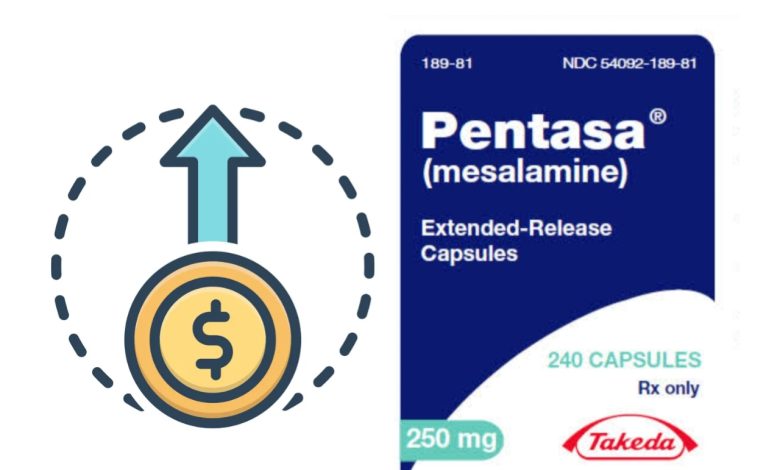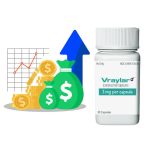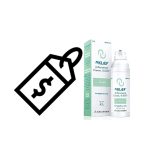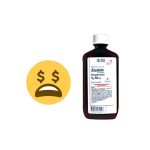Why is Mesalamine So Expensive?

Mesalamine, also known as mesalazine, is a medication used primarily to treat inflammatory bowel diseases (IBD) such as ulcerative colitis and Crohn’s disease. It belongs to a class of medications called aminosalicylates, which exert their therapeutic effects by reducing inflammation in the gastrointestinal tract.
Mesalamine is available in various formulations, including oral tablets, capsules, granules, and rectal suppositories or enemas. The choice of formulation depends on the severity and location of the inflammation within the gastrointestinal tract.
In ulcerative colitis, inflammation typically affects the lining of the colon and rectum, leading to symptoms such as abdominal pain, diarrhea, rectal bleeding, and urgency to defecate. Mesalamine works by inhibiting the production of inflammatory chemicals in the colon, thereby reducing inflammation and alleviating symptoms.
Crohn’s disease, on the other hand, can affect any part of the gastrointestinal tract, from the mouth to the anus. Mesalamine is particularly effective in treating Crohn’s disease when inflammation is limited to the colon and rectum, known as Crohn’s colitis or ileocolitis. In these cases, mesalamine helps to control inflammation and maintain remission.
Although mesalamine is very effective and generally well-tolerated, the cost of the medication is a major hurdle for most patients.
How much does Mesalamine cost?
The cost of mesalamine can vary significantly depending on various factors such as the dosage, formulation, brand, and geographic location. Mesalamine is available in different formulations including oral tablets, capsules, granules, and rectal suppositories or enemas. A one-month supply of mesalamine costs around $1,247.52.
Why is Mesalamine So Expensive?
Mesalamine is known for its relatively high cost. Several factors contribute to the expense of mesalamine they include:
1. Limited Competition: Mesalamine is primarily produced by a small number of pharmaceutical companies, leading to limited competition in the market. When there are few generic alternatives available, brand-name medications like mesalamine tend to be more expensive. The lack of competition allows manufacturers to maintain higher prices, as they face less pressure to lower costs to remain competitive.
2. Patent Protection: Pharmaceutical companies often hold patents on their medications, granting them exclusive rights to produce and sell the drug for a certain period. While patents eventually expire, allowing for the introduction of generic versions, the initial period of exclusivity enables manufacturers to charge higher prices to recoup research and development costs. Even after patents expire, manufacturers may introduce new formulations or extend patents through various strategies to prolong market exclusivity and maintain pricing power.
3. Specialized Formulations: Mesalamine is available in various formulations, including oral tablets, capsules, granules, and rectal suppositories or enemas. These specialized formulations may involve complex manufacturing processes and unique delivery mechanisms, which can increase production costs and contribute to higher prices for the medication.
4. Regulatory Requirements: The production and sale of pharmaceuticals like mesalamine are subject to stringent regulatory requirements imposed by health authorities. These regulations ensure product safety, efficacy, and quality but also entail compliance costs for manufacturers. Meeting regulatory standards, conducting clinical trials, and obtaining marketing approvals incur significant expenses, which may be passed on to consumers in the form of higher drug prices.
5. Research and Development Costs: The development of new medications, including mesalamine and its various formulations, involves substantial research and development (R&D) investments by pharmaceutical companies. These investments encompass preclinical research, clinical trials, regulatory submissions, and post-marketing surveillance. The high costs associated with drug discovery and development necessitate pricing strategies that enable manufacturers to recoup R&D expenditures and generate returns on investment.
6. Insurance Coverage and Healthcare System Dynamics: Insurance coverage and reimbursement policies within healthcare systems can also influence the cost of mesalamine for patients. Insurers negotiate prices with pharmaceutical manufacturers and may impose restrictions, formulary limitations, or copayments that affect patient access and out-of-pocket expenses. Additionally, healthcare systems’ budgetary constraints and cost-containment efforts may influence drug pricing and reimbursement decisions, impacting affordability and access to mesalamine for patients.
Overall, the high cost of mesalamine can be attributed to factors such as limited competition, patent protection, specialized formulations, regulatory requirements, research and development costs, and dynamics within healthcare systems. While mesalamine is a crucial therapy for managing IBD and improving patients’ quality of life, addressing affordability challenges requires collaborative efforts among stakeholders to promote competition, transparency, and access to essential medications.
How Can I get cheaper mesalamine?
Obtaining mesalamine at a more affordable price can be challenging due to its high cost and limited availability of generic alternatives. However, there are several strategies you can explore to potentially reduce the financial burden of mesalamine:
1. Generic Alternatives: While mesalamine is available under various brand names, generic versions of the medication may offer a more cost-effective alternative. Generic drugs are typically less expensive than their brand-name counterparts and are equally effective. Ask your healthcare provider or pharmacist if a generic version of mesalamine is available and suitable for your needs.
2. Shop Around: Prices for medications can vary between pharmacies. Consider calling different pharmacies in your area or using online comparison tools to find the best price for mesalamine. Some pharmacies may offer discounts or price-matching policies that can help lower your out-of-pocket expenses.
3. Prescription Assistance Programs: Pharmaceutical companies that manufacture mesalamine may offer patient assistance programs or copay assistance programs to eligible individuals. These programs provide financial assistance or discounts on prescription medications for patients who meet certain income criteria or lack adequate insurance coverage. Contact the manufacturer of mesalamine or visit their website to inquire about available patient assistance programs and eligibility requirements.
4. Insurance Coverage Review: Review your health insurance plan’s coverage for mesalamine. Some insurance plans may offer partial coverage for prescription medications, including mesalamine. Contact your insurance provider to understand the extent of coverage provided, any copayments or deductibles applicable, and whether mesalamine is included in your plan’s formulary.
5. Pharmacy Discount Cards: Pharmacy discount cards or prescription savings cards can help reduce the cost of mesalamine and other prescription medications. These cards are typically available for free and can be used at participating pharmacies to obtain discounts on the retail price of medications. Websites such as GoodRx and RxSaver offer prescription savings cards that can be used for mesalamine and other medications. For example, the cost for mesalamine oral delayed release tablet 1.2 g with discounts is around $89 for a supply of 30 tablets.
6. Mail-Order Pharmacies: Some mail-order pharmacies offer discounted prices on prescription medications, including mesalamine. By purchasing mesalamine through a mail-order pharmacy, you may be able to obtain it at a lower cost compared to purchasing it from a retail pharmacy.
7. Patient Advocacy Groups: Patient advocacy groups dedicated to gastrointestinal health or inflammatory bowel diseases may provide resources, support, and assistance to individuals seeking affordable access to mesalamine and other IBD treatments. These organizations may offer guidance on navigating insurance coverage, accessing patient assistance programs, and exploring cost-saving options.
By exploring these strategies and working with your healthcare provider and pharmacist, you may be able to obtain mesalamine at a more affordable rate while still effectively managing your inflammatory bowel disease. Additionally, don’t hesitate to discuss any concerns or financial constraints with your healthcare provider to explore alternative treatment options or cost-saving strategies.





